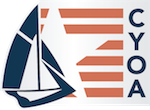A. Yes, it is likely that ‘headsails set flying’ (HSF) will be addressed by CRF in the future. Discussions onhow best to do this are now underway. One option under […]
Archives: FAQs
Q: I have a ‘tweener’ type code sail whose girths are smaller than those of an asymmetrical spinnaker or a ‘Code 0’. Can I fly this sail in races scored under CRF?
A: To avoid confusing owners, CRF strives to keep its sail definitions in synch with those laid out in the Equipment Rules of Sailing (ref page 30, https://d7qh6ksdplczd.cloudfront.net/sailing/wp-content/uploads/2020/10/05151946/Equipment-Rules-of-Sailing-2021-2024.pdf ). These […]
Q: Which scoring approach is preferable, Time on Distance (ToD) or Time on Time (ToT)?
A: The debate about whether ToD or ToT scoring is preferable can be endless. The reality is that ToD is simpler, it makes it much easier to monitor time allowances […]
Q: How is the Time Correction Factor (TCF) shown on the CRF 2024 certificate calculated?
A: CRF converts its ratings used for Time on Distance scoring (expressed in seconds/mile) to the Time Correction Factors (TCF’s) used for Time on Time scoring via the following formula: […]
Q: What is the difference between Time on Distance (ToD) and Time on Time (ToT) scoring?
A: The ratings used in the familiar ToD approach to scoring follow directly from the science of sailing yacht performance prediction, in that ToD ratings reflect the time that it […]
Q: Why is a ‘CRF GPH’ rating shown on the CRF 2024 certificate? What is the value added?
A: A CRF GPH rating is a prediction of how fast a boat should sail around a 1 mile course whose content consists of 1/3 VMG upwind, 1/3 VMG downwind, […]
Q: What is the difference between the CRF GPH and the CRF ratings shown previously on CRF certificates?
A: The short answer is that the CRF GPH is greater by a constant 535 sec/mi for all CRF ratings, so they can be used in either form to score […]
Q: I see ratings under a ‘CRF GPH’ heading on the CRF 2024 certificate. What is a GPH rating?
A: ‘GPH’ is an abbreviation for ‘General Purpose Handicap’. The ‘CRF’ prefix is added to distinguish the CRF GPH from the GPH handicaps that are produced by the ORCi and […]
Q. I have a yacht with a centerboard, and none of the keel profile sketches displayed in the rating application show a centerboard. What keel type should I declare?
A: Centerboard profiles are now shown in the underbody sketches for Keel Types 4, 5 and 6 here.
Q: I sail a schooner and intend to fly a ‘Gollywobbler’ type sail between her two masts. What data to I have to declare in order to be rated for that sail?
A. Yes, it is likely that ‘headsails set flying’ (HSF) will be addressed by CRF in the future. Discussions on how best to do this are now underway. One option […]
